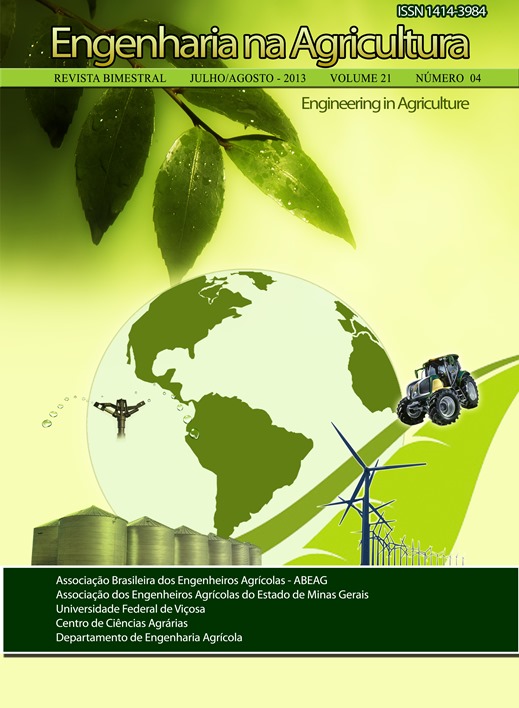USE OF A PORTABLE CHLOROPHYLL METER TO DETECT DIFFERENT NUTRITIONAL STATUS IN Brachiaria decumbens
DOI:
https://doi.org/10.13083/reveng.v21i4.350Keywords:
adubação nitrogenada, forrageira, SPADAbstract
Uniform fertilizer application as is used in conventional agrigulture is inefficient in the case of variable soil nutrition. Thus, the use of tools capable of identifying this variability may assist in site-specific application, allowing that each area receive the amount of fertilizer required. The objective of this work was to use a portable chlorophyll meter (SPAD 502) to detect different nutritional status resulting from different nitrogen fertilization rates in Brachiaria decumbens. This study was developed in a field already established with this forage, in the Forage Sector of the Department of Animal Science, Federal University of Viçosa, Brazil. Thirty plots measuring 3 x 3 m were defined that received the treatments of five different rates of nitrogen fertilizer (0, 50, 100, 150 and 200 kg ha-1) during the period of January to May of 2006. A completely random design with six replications was used. The nitrogen (N) leaf content analysis in the laboratory was used as a reference method. Regression analysis were performed, with lack-of-fit test between the studied variables (SPAD measurements, N leaf content and dry matter) and applied N. A correlation analysis was also performed between SPAD measurements and leaf N content. The results showed that with the exception of the first acquisition period, the SPAD was capable of detecting the effects of the differents N application doses. The correlation analyses also indicated that the chlorophyll meter can be considered an indicator of nutritional status of this forage.Downloads
Downloads
Published
How to Cite
Issue
Section
License
Authors who publish with this journal agree to the following terms:
The author(s) authorize(s) the publication of the text in the journal;
The author(s) ensure(s) that the contribution is original and unpublished and that it is not in the process of evaluation by another journal;
The journal is not responsible for the views, ideas and concepts presented in articles, and these are the sole responsibility of the author(s);
The publishers reserve the right to make textual adjustments and adapt texts to meet with publication standards.
From submission, the author is fully conceding the paper's patrimonial rights to the publication, but retaining the owner of its moral rights (authorship and paper's identification) according to Creative Commons Attribution-Noncommercial.








 Licensed by
Licensed by 